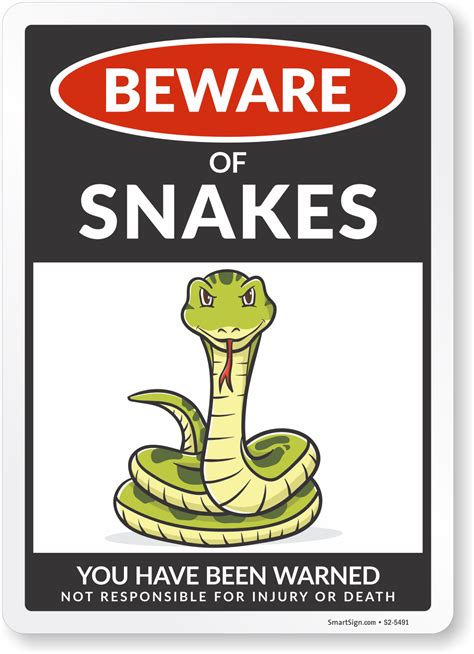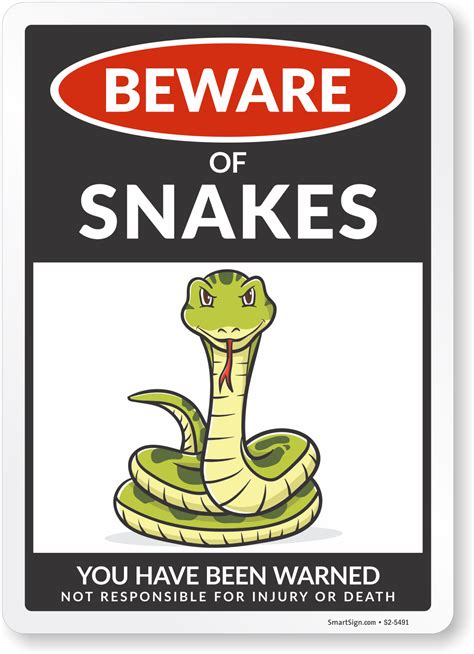
A golden retriever’s hilariously mournful reaction to the arrival of a new puppy has gone viral, perfectly capturing the canine equivalent of sibling rivalry. The dog’s expressive face, documented in a now-viral video, speaks volumes about the perceived disruption to its previously peaceful existence.
A video posted by TikTok user @ashleytubbs08 on June 7th has captured the internet’s attention, showcasing her golden retriever’s dramatic reaction to the arrival of a new puppy named Rye. The video, which has amassed millions of views, shows the golden retriever lying on the floor, head resting on its paws, with an unmistakable expression of discontent. Text overlay on the video reads, “Her face says it all… Puppy arrives, peace departs!” The comical contrast between the dog’s somber demeanor and the playful antics of the new puppy has resonated with pet owners worldwide, sparking a flurry of comments and shares.
The golden retriever, whose name wasn’t revealed in the original video and is not given in the Yahoo Lifestyle article, has become an instant internet sensation, with viewers quick to interpret her seemingly dejected state. Comments on the video range from humorous observations about the dog’s “diva” attitude to empathetic acknowledgments of the challenges older pets face when adjusting to a new addition to the family. “That is the look of betrayal,” one user commented, while another wrote, “She’s like, ‘Did you forget about me?'” The video taps into a universal experience for pet owners, highlighting the complex emotions that animals can display and the adjustments required when introducing a new pet into an established household.
The popularity of the video underscores the powerful connection people have with their pets and the ability to project human emotions onto animal behavior. While it’s impossible to know exactly what the golden retriever is feeling, the video provides a lighthearted glimpse into the potential challenges and humorous moments that can arise when integrating a new puppy into a family. The video’s virality also highlights the captivating nature of animal expressions and the joy people find in observing and sharing these moments online.
Understanding Canine Emotions and Introducing New Pets
While the video of the golden retriever is undoubtedly humorous, it also provides an opportunity to consider the emotional lives of dogs and the best practices for introducing new pets into a household. Dogs are highly social animals with complex emotional ranges. They experience joy, sadness, fear, and anxiety, and their reactions to new situations and individuals can vary significantly depending on their personality, breed, and past experiences.
Introducing a new puppy into a home with an established dog can be a delicate process that requires careful planning and patience. It’s crucial to consider the older dog’s temperament and personality and to create a safe and controlled environment for the initial interactions. Rushing the introduction or failing to provide adequate attention and reassurance to the older dog can lead to stress, anxiety, and even aggression.
Tips for Introducing a New Puppy to an Older Dog:
-
Scent Introduction: Before the puppy arrives, introduce the older dog to the puppy’s scent by bringing home a blanket or toy that the puppy has used. This allows the dog to become familiar with the new scent in a non-threatening way.
-
Controlled First Meeting: The initial meeting should take place in a neutral location, such as a park or a neighbor’s yard, where the older dog doesn’t feel territorial. Keep both dogs on leashes and allow them to sniff each other briefly. Observe their body language closely for signs of stress or aggression.
-
Supervised Interactions: After the initial meeting, allow the dogs to interact in a controlled environment, such as a fenced yard, under close supervision. Keep the interactions short and positive, and separate the dogs if either one shows signs of becoming overwhelmed.
-
Separate Feeding Areas: Feed the dogs in separate areas to prevent food aggression and competition.
-
Individual Attention: Ensure that the older dog continues to receive plenty of individual attention and affection. This will help to reassure the dog that it is still loved and valued.
-
Safe Spaces: Provide both dogs with their own safe spaces, such as a crate or bed, where they can retreat to when they need to rest or escape the attention of the other dog.
-
Patience and Consistency: Be patient and consistent with the introduction process. It may take several weeks or even months for the dogs to fully adjust to each other.
Interpreting Canine Body Language:
Understanding canine body language is essential for monitoring the interactions between the dogs and identifying any potential problems early on. Signs of stress or anxiety in dogs include:
-
Lip Licking: Licking the lips repeatedly, especially when no food is present.
-
Yawning: Yawning when not tired.
-
Whale Eye: Showing the whites of the eyes.
-
Tucked Tail: Holding the tail low or tucked between the legs.
-
Panting: Panting excessively, even when not hot or exerting themselves.
-
Avoidance: Turning away from the other dog or avoiding eye contact.
-
Stiff Body Posture: Holding the body rigid and tense.
-
Growling or Snapping: These are clear warning signs that the dog is feeling threatened.
If you observe any of these signs, separate the dogs immediately and consult with a veterinarian or certified dog trainer for guidance.
The Benefits of Having Multiple Dogs:
While introducing a new puppy can be challenging, there are also many benefits to having multiple dogs in a household. Dogs are social animals and often thrive in the company of other dogs. Having a canine companion can provide exercise, mental stimulation, and companionship. Multiple dogs can also create a more playful and enriching environment for the entire family.
However, it’s important to be realistic about the challenges involved and to ensure that you have the time, resources, and patience to properly care for multiple dogs. It’s also essential to consider the individual personalities and needs of each dog and to create a harmonious and balanced environment for them to thrive.
The golden retriever’s viral reaction to the new puppy provides a humorous reminder of the complex emotions and adjustments involved in introducing new pets. By understanding canine emotions, implementing careful introduction strategies, and providing individual attention and support, pet owners can create a happy and harmonious home for all of their furry companions. The video, while funny, also opens a door for owners to think about their own pets’ feelings during the introduction of a new animal to the house.
The Perspective of a Dog Trainer:
To gain further insight into this common scenario, I consulted with certified professional dog trainer, Sarah Hodgson, who provided valuable perspective on how to handle such situations. “The key is preparation,” Hodgson emphasized. “Before you even bring the puppy home, make sure your older dog has a solid foundation of obedience training. This includes commands like ‘leave it,’ ‘stay,’ and ‘go to your place.’ These commands will be invaluable for managing interactions and preventing unwanted behaviors.”
Hodgson also stressed the importance of creating positive associations with the puppy’s presence. “Pair the puppy with positive experiences for your older dog. Give them treats and praise when the puppy is around, and make sure they still get plenty of individual attention and playtime. This will help them see the puppy as a positive addition to their life, rather than a threat.”
Furthermore, Hodgson advised against forcing interactions. “Let the dogs interact at their own pace. Don’t force them to play together or be near each other if they’re not comfortable. Provide them with separate spaces where they can retreat to when they need a break. This will help prevent overwhelm and reduce the likelihood of conflict.”
Addressing the specific scenario depicted in the viral video, Hodgson noted, “The golden retriever’s reaction is perfectly normal. It’s important to acknowledge their feelings and validate their experience. Don’t dismiss their emotions or try to force them to be happy about the puppy’s arrival. Instead, offer them reassurance and support, and let them know that they are still loved and valued.”
In summary, Hodgson reiterated the importance of patience, consistency, and positive reinforcement when introducing a new puppy to an older dog. “It takes time for dogs to adjust to new situations and form new relationships. Be patient with them, be consistent with your training and management, and focus on creating positive associations. With the right approach, you can help your dogs develop a harmonious and loving relationship.”
Golden Retrievers: A Breed Overview
Golden Retrievers are renowned for their friendly, intelligent, and gentle nature, making them one of the most popular dog breeds worldwide. Originally bred in Scotland as gundogs to retrieve waterfowl, they possess a strong work ethic, a keen sense of smell, and a love for water. Their eagerness to please and trainability make them excellent companions for families and individuals alike.
Physical Characteristics:
- Size: Male Golden Retrievers typically stand 23-24 inches tall at the shoulder and weigh 65-75 pounds, while females stand 21.5-22.5 inches tall and weigh 55-65 pounds.
- Coat: They have a dense, water-repellent double coat that sheds moderately throughout the year, with heavier shedding during seasonal changes. The coat color ranges from light golden to dark golden.
- Lifespan: Golden Retrievers typically live for 10-12 years.
Temperament:
- Friendly and Affectionate: Golden Retrievers are known for their friendly and affectionate nature. They are generally good with children, other dogs, and even strangers.
- Intelligent and Trainable: They are highly intelligent and eager to please, making them relatively easy to train. They excel in obedience, agility, and other dog sports.
- Active and Playful: Golden Retrievers are active dogs that require regular exercise. They enjoy playing fetch, swimming, and going for walks or runs.
- Loyal and Devoted: They are loyal and devoted companions who thrive on human interaction.
Health Considerations:
Golden Retrievers are prone to certain health problems, including:
- Hip Dysplasia: A condition in which the hip joint does not develop properly.
- Elbow Dysplasia: A similar condition affecting the elbow joint.
- Cancer: Golden Retrievers have a higher risk of developing certain types of cancer, such as lymphoma and hemangiosarcoma.
- Hypothyroidism: A condition in which the thyroid gland does not produce enough thyroid hormone.
- Progressive Retinal Atrophy (PRA): A group of inherited eye diseases that can lead to blindness.
Care Requirements:
- Exercise: Golden Retrievers require at least one hour of exercise per day. This can include walks, runs, swims, or play sessions.
- Grooming: They require regular grooming to prevent matting and tangles. Brushing several times a week is recommended, with more frequent brushing during shedding season.
- Training: Early socialization and obedience training are essential for Golden Retrievers.
- Nutrition: Feed a high-quality dog food that is appropriate for their age and activity level.
- Veterinary Care: Regular veterinary checkups are important for maintaining their health and detecting any potential problems early on.
The Broader Impact of Viral Pet Videos:
The virality of the golden retriever video is not an isolated incident. The internet is replete with animal videos, from cats playing the piano to dogs performing incredible tricks. These videos often elicit strong emotional responses from viewers and contribute to the growing anthropomorphism of pets in popular culture. While these videos can be entertaining and heartwarming, they also raise questions about the ethics of animal entertainment and the potential for misinterpreting animal behavior.
Anthropomorphism and Misinterpretation:
Anthropomorphism, the attribution of human traits, emotions, or intentions to non-human entities, is a common phenomenon in our interactions with animals. While it can foster empathy and strengthen our bonds with pets, it can also lead to misinterpretations of their behavior. For example, we might assume that a dog is feeling “guilty” when it displays submissive behaviors after chewing on a shoe, when in reality, the dog is likely responding to our tone of voice and body language.
It’s important to be mindful of the potential for anthropomorphism when interpreting animal behavior and to rely on scientific evidence and expert advice to gain a more accurate understanding of their emotional lives. Veterinarians, animal behaviorists, and certified dog trainers can provide valuable insights into the underlying causes of animal behavior and help us to communicate with our pets more effectively.
Ethical Considerations in Animal Entertainment:
The popularity of animal videos also raises ethical considerations about the treatment of animals in entertainment. While many animal videos are harmless and entertaining, others may depict animals being subjected to stressful or harmful situations for the sake of amusement.
It’s important to be critical of the content we consume and to support responsible animal entertainment that prioritizes the well-being of the animals involved. Avoid videos that depict animals being forced to perform unnatural behaviors, subjected to cruel or inhumane treatment, or exploited for profit.
The Positive Side of Viral Pet Videos:
Despite the potential downsides, viral pet videos can also have a positive impact. They can raise awareness about animal welfare issues, promote responsible pet ownership, and foster a greater appreciation for the intelligence and emotional complexity of animals. They can also provide a sense of community and connection for pet lovers around the world.
Ultimately, the value of viral pet videos depends on the content itself and the context in which it is viewed. By being mindful of the potential for misinterpretation and exploitation, we can enjoy these videos responsibly and use them as an opportunity to learn more about the fascinating world of animals.
The Importance of Socialization for Puppies and Adult Dogs
Socialization is a critical aspect of raising a well-adjusted and confident dog, both for puppies and adult dogs. Proper socialization involves exposing your dog to a variety of sights, sounds, people, and experiences in a positive and controlled manner. This helps them develop into well-behaved and adaptable companions.
Puppy Socialization:
The socialization window for puppies is typically between 3 and 16 weeks of age. During this time, puppies are particularly receptive to new experiences and are less likely to develop fear or anxiety related to these experiences later in life.
- Exposure to Different People: Introduce your puppy to people of different ages, races, genders, and appearances.
- Exposure to Different Environments: Take your puppy to different places, such as parks, stores, and busy streets.
- Exposure to Different Sounds: Expose your puppy to a variety of sounds, such as traffic, sirens, and household noises.
- Exposure to Different Objects: Introduce your puppy to different objects, such as umbrellas, strollers, and bicycles.
- Positive Reinforcement: Always use positive reinforcement, such as treats and praise, to reward your puppy for calm and confident behavior during socialization experiences.
Socialization for Adult Dogs:
While the socialization window is more limited for adult dogs, it is still possible to socialize them to new experiences and environments. The key is to proceed slowly and cautiously, and to avoid overwhelming the dog.
- Start with Familiar Environments: Begin by exposing your adult dog to new experiences in familiar environments, such as your home or yard.
- Gradual Exposure: Gradually introduce your dog to new environments and people, starting with short and controlled interactions.
- Positive Reinforcement: Use positive reinforcement to reward your dog for calm and confident behavior.
- Avoid Forcing Interactions: Never force your dog to interact with people or other animals if they are feeling anxious or fearful.
- Consult a Professional: If you are struggling to socialize your adult dog, consult with a veterinarian or certified dog trainer for guidance.
Addressing Fear and Anxiety:
If your dog exhibits signs of fear or anxiety during socialization experiences, it is important to address these issues promptly. Ignoring fear and anxiety can lead to more serious behavioral problems in the future.
- Identify the Trigger: Determine what is causing your dog’s fear or anxiety.
- Counter-Conditioning: Use counter-conditioning to change your dog’s association with the trigger from negative to positive.
- Desensitization: Gradually expose your dog to the trigger in a controlled environment, starting with low-intensity stimuli and gradually increasing the intensity as your dog becomes more comfortable.
- Medication: In some cases, medication may be necessary to help manage your dog’s fear or anxiety.
FAQ Section
1. What is the main point of the news article?
The main point is that a video of a golden retriever reacting with a seemingly sad expression to the arrival of a new puppy has gone viral, highlighting the humorous and sometimes challenging aspects of introducing new pets to a household.
2. What are some tips for introducing a new puppy to an older dog to minimize stress?
Some tips include scent introduction before the puppy arrives, controlled first meetings in neutral locations, supervised interactions, separate feeding areas, providing individual attention to the older dog, creating safe spaces for both dogs, and being patient and consistent throughout the process.
3. What are some signs of stress or anxiety in dogs that owners should watch out for during the introduction process?
Signs include lip licking, yawning (when not tired), showing the whites of the eyes (“whale eye”), a tucked tail, panting excessively, avoidance behaviors, stiff body posture, and growling or snapping.
4. Is it common for older dogs to react negatively to a new puppy?
Yes, it is common. Older dogs may feel their territory, routine, and attention are threatened by the new puppy, leading to feelings of stress, jealousy, or resentment. The viral video is a humorous example of this common reaction.
5. What should pet owners do if their older dog is showing significant signs of distress or aggression towards the new puppy?
Pet owners should separate the dogs immediately and consult with a veterinarian or certified dog trainer for guidance. They can help assess the situation, develop a behavior modification plan, and ensure the safety and well-being of both dogs.









